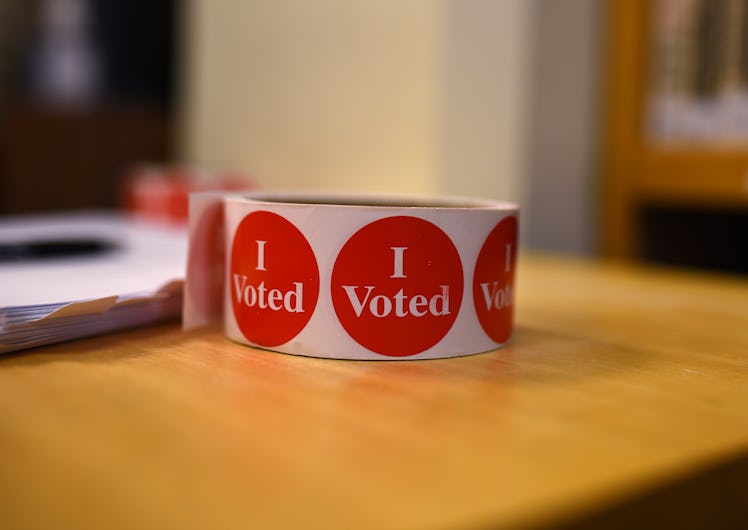
You Might Need This Important Item To Cast Your Vote, So Come Prepared To The Polls
Pumpkin Spice Lattes and Halloween decorations are in full swing, and before you know it October will be in your rearview mirror and November will be swinging around the corner. While the eleventh month usually seems kind of lackluster compared to its predecessor, this year it means the 2018 midterm elections. But before you head to the polls on Nov. 6, you might be asking, do I need an ID to vote? Short answer: it depends.
Voting is actually pretty simple (other than the massive lines) but gearing up for that pivotal moment you cast your ballot can be a little tough to navigate. If you're not sure what to bring with you to the polling place, it's pretty easy to find out. Like almost every aspect of the voting process, it depends on the state you live in. Some states require you to have some form of ID, while others just ask you to sign a documents validating your identity, according to USA.gov.
Some states are stricter than others about what kind of ID they'll accept, too. States like Georgia and Virginia require you to have a photo ID, which include things like driver’s licenses, passports, and state-issued ID cards. However, states like Arizona and Ohio are OK with non-photo IDs, which include social security cards, bank statements, or even utility bills, since they confirm that you live at a certain address. But even states with strict photo ID laws allow some exceptions. For instance, the National Conference of State Legislatures (NCSL) website states that exemptions are offered to people who have a religious objection to being photographed or who lost their identification in a recent natural disaster.
But if you don't have any form of ID, take a breath before you freak out. Some states, like New York, don't have an ID requirement at all. Instead, if you've voted before, then often you'll see last time's signature next to your new one and know that practicing your signature to perfection in your marble notebook totally came in handy. To find out what the rules are in your state, just head to the NCSL website for the full rundown. USA.gov notes, however, that if you're a first-time voter who didn't register in person, most states will require you to have some form of ID for that first vote.
If you want my advice (which of course you do), I'd say better safe than sorry. So if you have an ID, bring it along just in case.
Now that you know what to bring with you, it's probably helpful for you to know where exactly you have to show up on Nov. 6. Assuming you know your address, finding your polling place is actually pretty simple. Just head over to Vote.org and on the homepage you will see a red box that says "find your polling place." Clicking that will bring you to the "polling place locator" where you can just type in your address and hit "go" to find your polling place.
If for some reason that doesn't work or you're a fan of doing things the hard way, on that same page you'll find polling place locators for each state individually. So if you live in Arizona, you'd find it on the list and click "Arizona polling place locator." Whether you choose to do it by state or with the general locator, the steps are pretty much the same. Some states, like Arizona, might ask you to also fill in your date of birth as well as your address, but that's still pretty simple — given you also know your birthday of course.
All the minutiae of voting — like knowing what to bring or where to go — can seem pretty daunting, but when you break it down it's actually quite simple. OK, maybe it's a little boring reading through tons of voter info, but it's all worth it to have a say in your country's politics. So no excuses!